Gazania is the flower that is perfect for the decor of your garden plot. If you lack bright colors in the flowerbed or on the plot, feel free to prefer this plant. Gazania is unpretentious and has chic large flowers. At the form of petals resembles a chamomile, but has a lot of colorful colors. In some countries, gas is called "midday sun", because It has a property to reveal their petals in the midday heat. Flower must have to taste and beginner gardeners, because Caring for Gazania is not complicated and growing one pleasure. The experienced gardeners choose this perennial because of his huge decorative value and the ability to decorate even the most pouron and unsightly garden plot. Like bright flats, flowers will delight the eyes of any passing and fill the space of summer colors. In this article, consider the varieties of gas, the peculiarities of its cultivation, care and reproduction, and also learn about diseases and pests that can hit Gazania.
Appearance and varieties of gas
Gazania, or otherwise "Gotania", is an annual or perennial plant of small height - no more than 30 cm. This flower came to us from the distant South Africa and therefore is sometimes called the "African chamomile". In the 17th century, Gazania moved to Europe and since then there was firmly settled. Its modern title is a plant in honor of the Italian priest Theodore background Gaza. Dark green leaves with a gray tint are located on a small stem. On the inside, they have thick villi, which perform very important functions. In the dry time of the year, they can hold the precious for flower moisture for a long time. Due to this, the gas is considered a drought-resistant flower. These villi also protect the flower from the cold. Inflorescences are achieved in diameter 5-9 cm. They can be yellow, red, orange colors with dark specks. On one plant can be up to 35 inflorescences. Currently, the gardeners are successfully grown about 40 types of gas. For example, such as:
- Snow-white gazania.
- Single-flowered gazania.
- Gazania Celebrate.
- Gazania long-satellite.
- Pavlinia gazania.
- Gazania brilliant, etc.
Breeders have achieved tremendous success in gazanium breeding. Some varieties simply affect their magnificence. Each variety is unique and beautiful. Flowers differ in both shape and painting. In the photo you can consider these differences most accurately. Here are some of the popular varieties:
- Gazania Ministar.
- Gazania Daybreak.
- Gazania Big Kiss White Flame.
- Gazania Kiss Yellow Flame.
Breeders have achieved incredible success in the cultivation of hybrid gazanium varieties. Flowers are striking not only a delightful combination of paints, but even the ability to grow in fairly cloudy conditions, which have some new varieties. Growing several varieties of gas in the site, you can create beautiful floral compositions.
How to grow an "african chamomile" at home
Growing gas from seeds with a seedy
Gazania is very well multiplied by seeds and this is perhaps the most favorite way to breed this flower with gardeners. After all, after 2.5-4 months after the emergence of the first germs, it is capable of blooming. And the germination of seeds is preserved for 2 years. Because From the sowing before the start of flowering passes a little time, then it is recommended to multiply seeds through seedlings. In the regions with a sufficiently soft climate you can sow seeds immediately in open ground.
- Select a substrate for sowing. The soil must be lightweight, well drained and loose.
- Select the landing container. The optimal option will be the cultivation of seedlings in a peat-up potted pots, to then make a falling into the open soater the least traumatic for plants. But you can grow in conventional boxes for seedlings. Such boxes should be deep enough, because In Gazania, a long stem.
- SEE seeds. Gas seeds are quite large, so it is necessary to sow them, it is necessary to spread them in a checker order at a distance of 2-3 cm. You can just slightly press the seeds to the soil, but you can pour out a very thin layer of soil, spray with a sprayer from the sprayer. Next, the procedure for action is the same as in the cultivation of any other seedlings. Sowing must be covered with cellophane or cover with glass and put into warm and bright place. Do not forget about your crops. Daily look at them, let's venture, remove the condensate and follow the soil moisture. The first shoots will appear after 1-2 weeks.
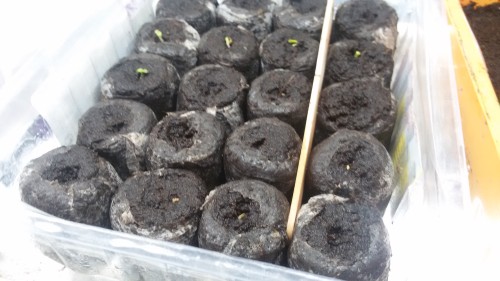
- Care of seedlings. First you may seem that seedlings grow quite slowly. But with an increase in temperature and sunlight, the gas will begin to develop faster and faster. Experienced specialists recommend to fuse the seedlings in a cooler place. If you have a glazed balcony, it will be ideal for gas location. It can already be transferred there after the appearance of the 4th sheet, but provided that the temperature on the balcony will be not lower than 16 degrees. If you initially sowed seeds in shallow tanks, then the seedlings will have to dive. It is better to do it in a peat gear. Carefully with the help of a long scoop, dig a seedman along with an earthen room and transope in a pot. If the seedlings grows in a deep box, then you can do without dive. With the gradual approach of the landing time in the ground, it is useful to "harden" the gas. Longly open the window, but follow the lack of drafts.
- Rechazzle seedlings in open ground. Planting produce in May-June when the night frosts will be afraid. In a pre-fertilized and prepared soil, seedlings are planted. Maximum carefully, without damaging the root system, dig out the seedlings from the box with a long scoop and transferred to the ground. Or, planted immediately in a peat-free pot if the seedlings were grown in it.
Already quite soon after such a transplant, you can observe the first flowers. They will first be a little. After they are swinging, cut them. So, you stimulate the intensive growth of the new inflorescences. By the way, growing gas you can collect your own sowing material yourself. On the site of the blurred inflorescences, a box with a fluffy hokholk is formed. Seeds inside the box with such a "empty" are easily spread by the wind. Thus, the samoposum of gas. But, unfortunately, in the context of the climate of Russia, this germination of seeds is thus almost impossible. If the summer was very hot, then you can completely collect seeds from such a box and save them until next spring. Some gardeners use such a trick as the binding of the box with a ribbon or cloth so that it does not reveal ahead of time, and to catch the seeds. Store such seeds collected by itself, it is recommended in a cool room in paper or tissue bags.
Growing gas from seeds with a reckless way to open ground
The "African chamomile" in the regions with a warm and mild climate can be tried to grow with a reckless way, i.e. Straight into open ground. The main thing is to choose the right place to land. Gazania does not tolerate clay, heavy soil. Pick up a plot with light and nutrient soil. The place where you will sow seeds should be sufficiently sunny. Before boarding, as usual, prepare the soil. For this purpose, it is possible to use the usual humid (2-4 kg per 1 sq. M. m) and mineral fertilizers. If you know that on your site, groundwater flows very close to the surface, then it is better to put a layer of drainage on the bottom of the landing. Sowing in mid-March - early April. Seed seeds are necessary at a distance of 15-20 cm from each other, not much deepening to the ground, about 2 cm. If you are using a part of the open soil for growing sedentary material (in order to sear the gas later on their permanent point of growth), then use The same seed landing scheme, as in a seeding method, which was described above. After you landed the seeds, they can be slightly sprinkled with earth and cover with a film. Thanks to the film, you can create an optimal microclimate for rapid seedlings and protect against possible nightly cold. As in the university, check your "guys", remove the condensate and follow the humidity of the soil.
Growing gas through shifting
Since the gas is sowing seeds into open primer, the vegetative way of reproduction remains fairly used among gardeners. Moreover, some varieties of gazania, such as Gazania, a terry, multiply only this method at home. Hybrid varieties in reproduction with cuttings also retain all their qualities from maternal plants. If you wanted to propagate this plant with cuttings, then the order of your actions will be:
- In the middle of summer, when the sideways began to appear, they need to cut. To do this, you will need a sharp knife or a secateur. Escape is cut off with the so-called "heel". In length, it should reach 10 cm.
- Cutted cuttings need to be treated with a corpsulatory drug. It is possible to sprinkle a cut back or immerse a stalk, pre-removing the lower leaves, in a 0.1% solution of naphthyl amoxic acid or 0.5% indolylmalaic acid. Such a procedure increases the likelihood of durable cutting of the cutting into the ground.
- Next, the prepared and treated cutlets must be planted into the ground. To do this, it will suit the capacitance filled with perlite, peat-sandy mixture or the soil in which the seedlings of the gas was grown. Keep in mind that for one cutter should be enough space, about 9-10 cm in diameter. Located cuttings need to be stored in a light room.
- Behind the cutlets require constant care: timely watering, feeding fertilizers. The air temperature should be about 15-18 degrees. Gazania should be rooted in 5-6 weeks. But you can only fall into the open ground you can only next in spring.
As you can see, each method of breeding this beautiful flower is good and effective. You can use any way you like, having previously studied all the necessary manipulations. In general, the gas is multiplied very easily and without any difficulties, it does not require the creation of special temperature conditions, dimming or flower care.
Gasania care features
Although Gazania arrived to us from distant lands, care for it is absolutely not complicated. The main thing, moderately water it, mulch and loose the soil. The blurred inflorescences must be deleted in time. If you choose the right place to grow gas, then the care will be reduced to a minimum. Light, loose and fertile soil is the main key of success. Like any garden plant, Gazania willingly respond to various feeding. If the soil is fertile in itself, then mineral fertilizers can be made 1 time in 1-1.5 months. If the soil is scarce on fertility, then you can do it once every 2-4 weeks. The norm of mineral fertilizer is calculated from the calculation of 20-25 gr / sq. M. The "African Chamomile", when complying with all agrotechnical requirements, will surely please you with abundant bloom since the beginning of summer and until November. A feature of this flower is that in cloudy weather the baskets are "closed" and hide the sidelines of the infloresception. And in the solar time - reveal. Sometimes the flower products complain that they are always in a semi-closed state in the site. This means that the wrong place was chosen, i.e. Not enough sunny. The annual or perennial of gas can take freezing to 3-5 degrees of frost. But, since this is a South African plant, transfer the winter in the open ground it cannot. But but the gas can easily be overwhelmed in a pot, at home. If you decide to grow in gas in such a way as a perennial, then in November you need to transplant the flowers in the tanks or boxes of suitable size. Store these boxes are preferably at a temperature of 8-10 degrees and follow the humidity of the soil. With the arrival of spring again, fall off the gas in the open soil. But do not forget to shorten the shoots on half to stimulate the growth of new and young shoots.
What is sick of Gazania
If you are afraid to start studying colors, thinking that you have to constantly fight the pests of plants, use all sorts of chemicals to treat diseases, etc., then be safely starting the gardening thing from the cultivation of Gazania. This is one of those flowers that are practically not subject to any diseases and pests. Of course, if the flower is weakened, or it was planted in the already infected soil, then without treatment it is not necessary. If we talk about diseases that can hit the "African Chamomile", then, of course, this is gray rot. Gray rot may have plants with water stagnation near the root system. Perhaps you chose a place where the groundwater flows too close to the surface. In order to avoid infection with a gray rot, try in no case to fall in water on the leaves when watering. The same applies to feeding - fertilizers should not fall on leaves or stems of gas. Remember that this is a drought-resistant flower from Africa, and the re-fulfillment of moisture to him. Sometimes the gas can be overtaken by the disgraces. In this case, nothing will remain, how to simply remove the plant, because There are no treatments for this viral disease. Such a virus can be transferred when cutting cuttings, through the soil. The trouble can also serve as a carrier, so it needs to be struggled especially carefully. For this purpose, onions and garlic are sometimes planted near the gas, because Their strong smell scares the TRU. False powdery dew can also overcome gas jamming. This disease manifests itself with white fungal nails on the bottom of the sheet. Recognize this disease is not always possible, because The inner side of the leaves in Gazan itself is white. False powdery dew applies very quickly and on neighboring plants, so they need to be deleted. Sometimes on shutters you can find mini kids. These are small black pits, which over time form real mine running on the leaves. When wintering in the cool premises, the process of infection can slow down, but then, with an increase in ambient temperature, the disease progresses very quickly. Plants are deleted. Snails and slugs are frequent pests of gardens. They may want to enjoy and gaznia. They need to be collected manually. Help can hedgehogs, birds, as well as the smell of such plants like sage, garlic, parsley. The web tick is another attack that can overcome the African Chamomile. But it is easily treated with various insecticides.
Your garden, or just flowerbed, will definitely play new paints with this amazing and very unpretentious flower. "African chamomile" will give many weeks of bright flowering and aesthetic pleasure!

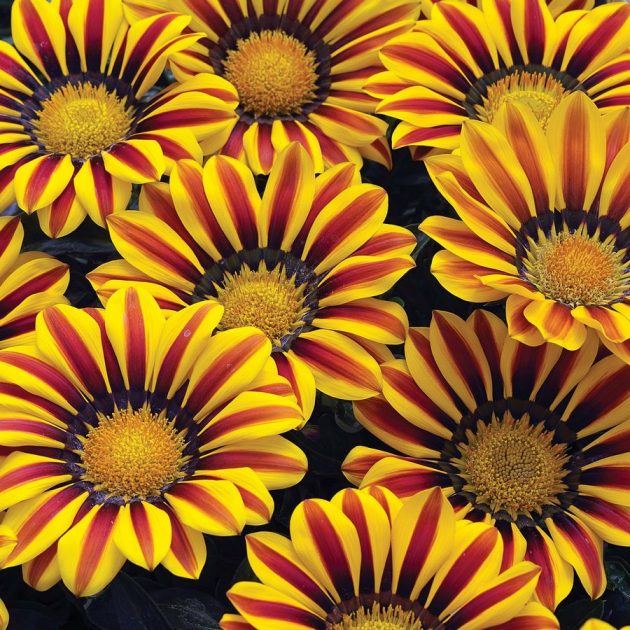
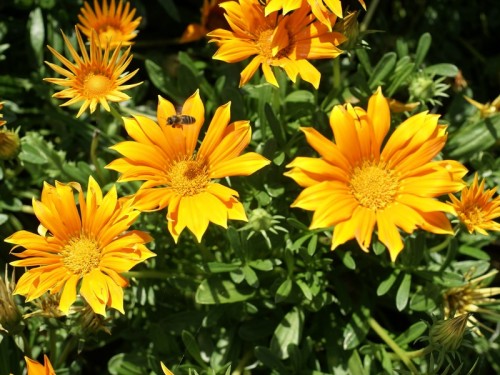
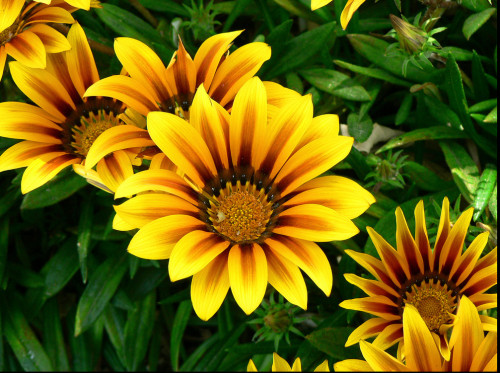
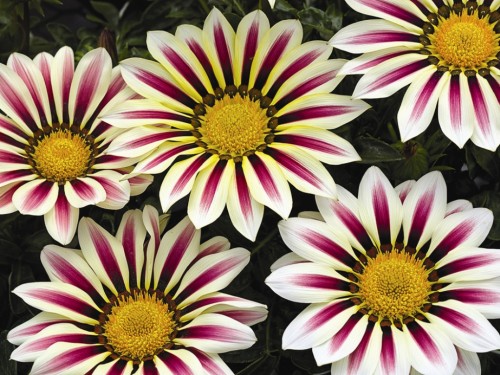
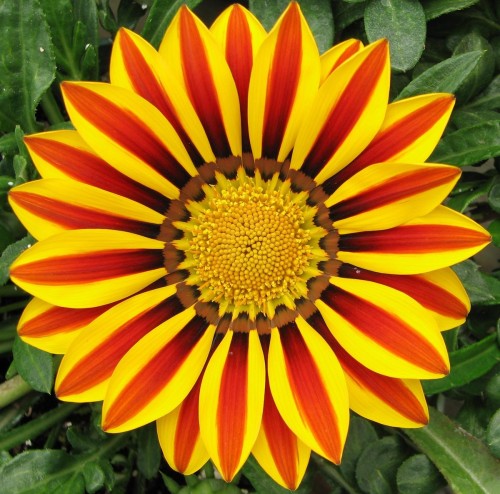
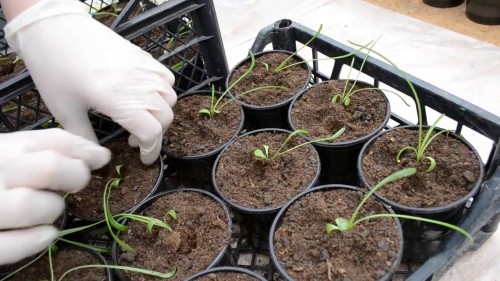
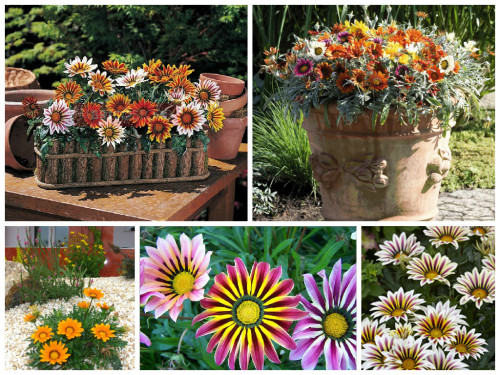
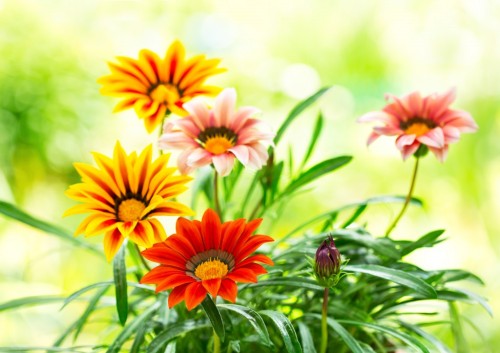
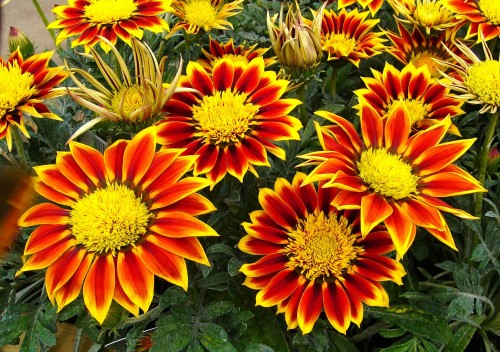












 Start a discussion ...
Start a discussion ...